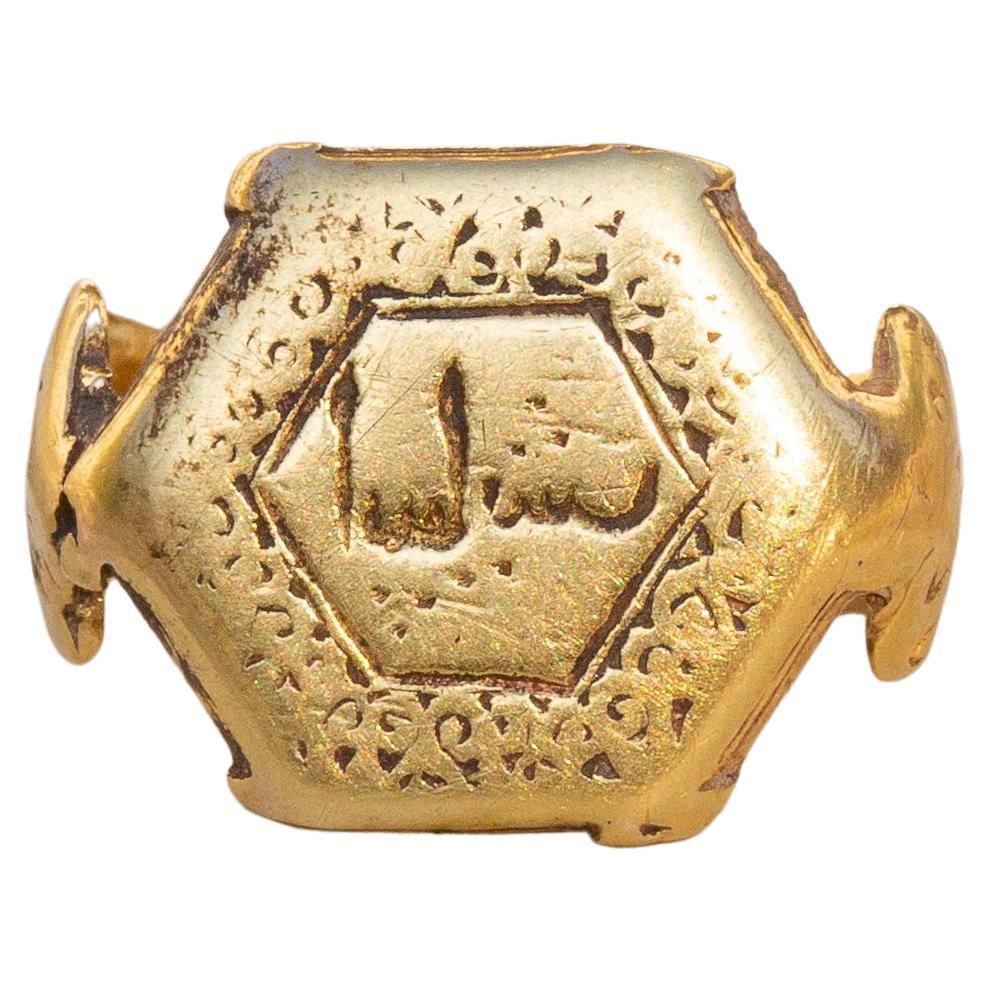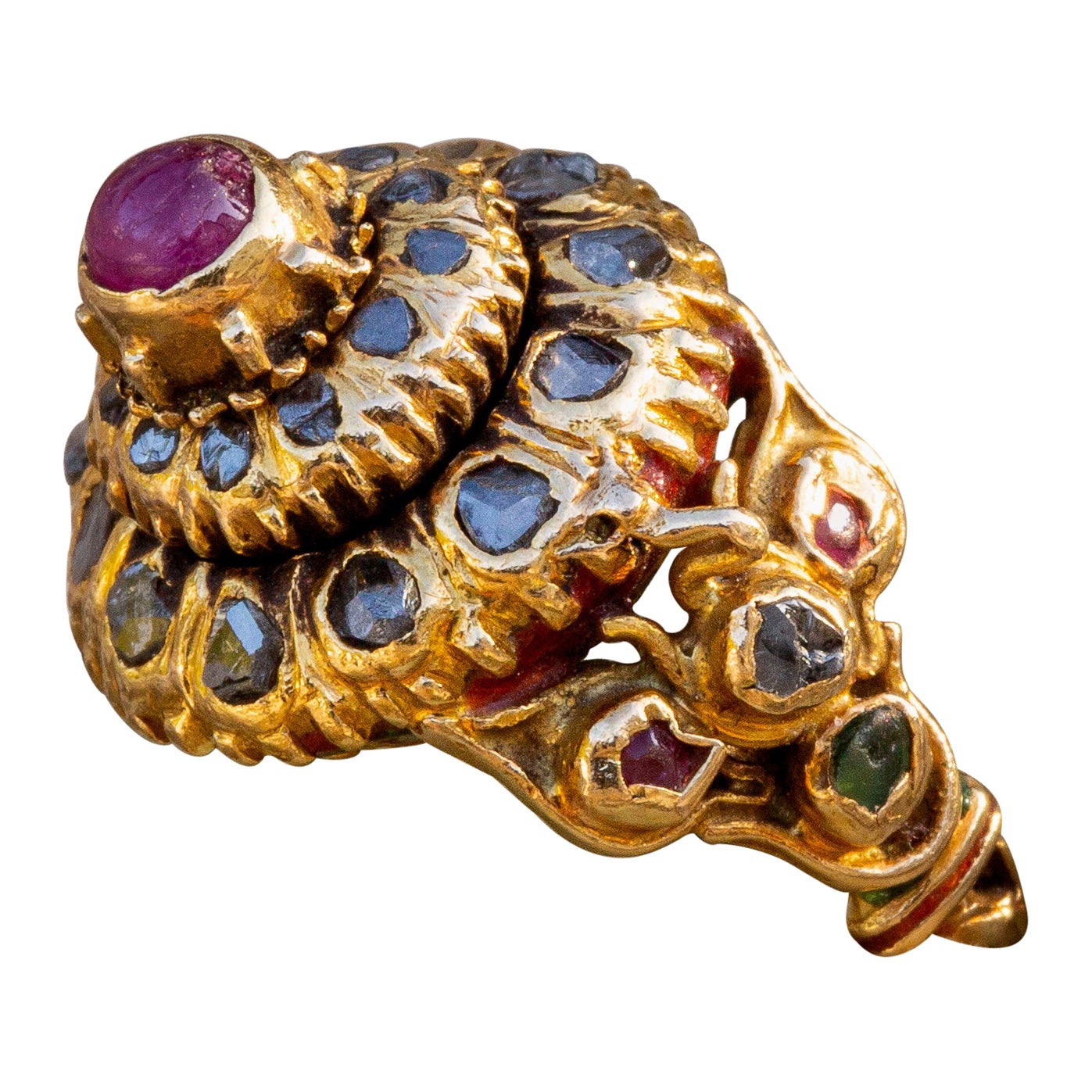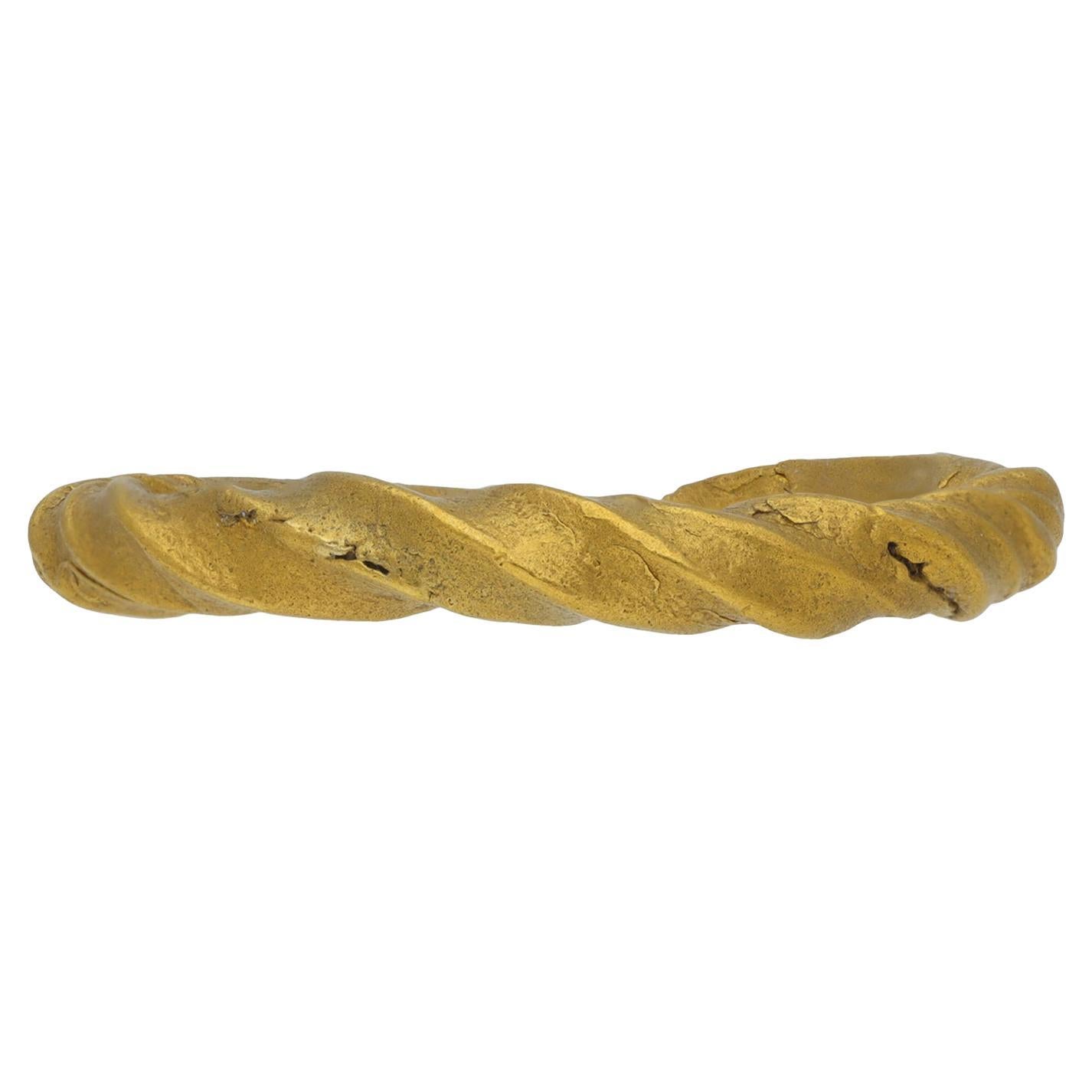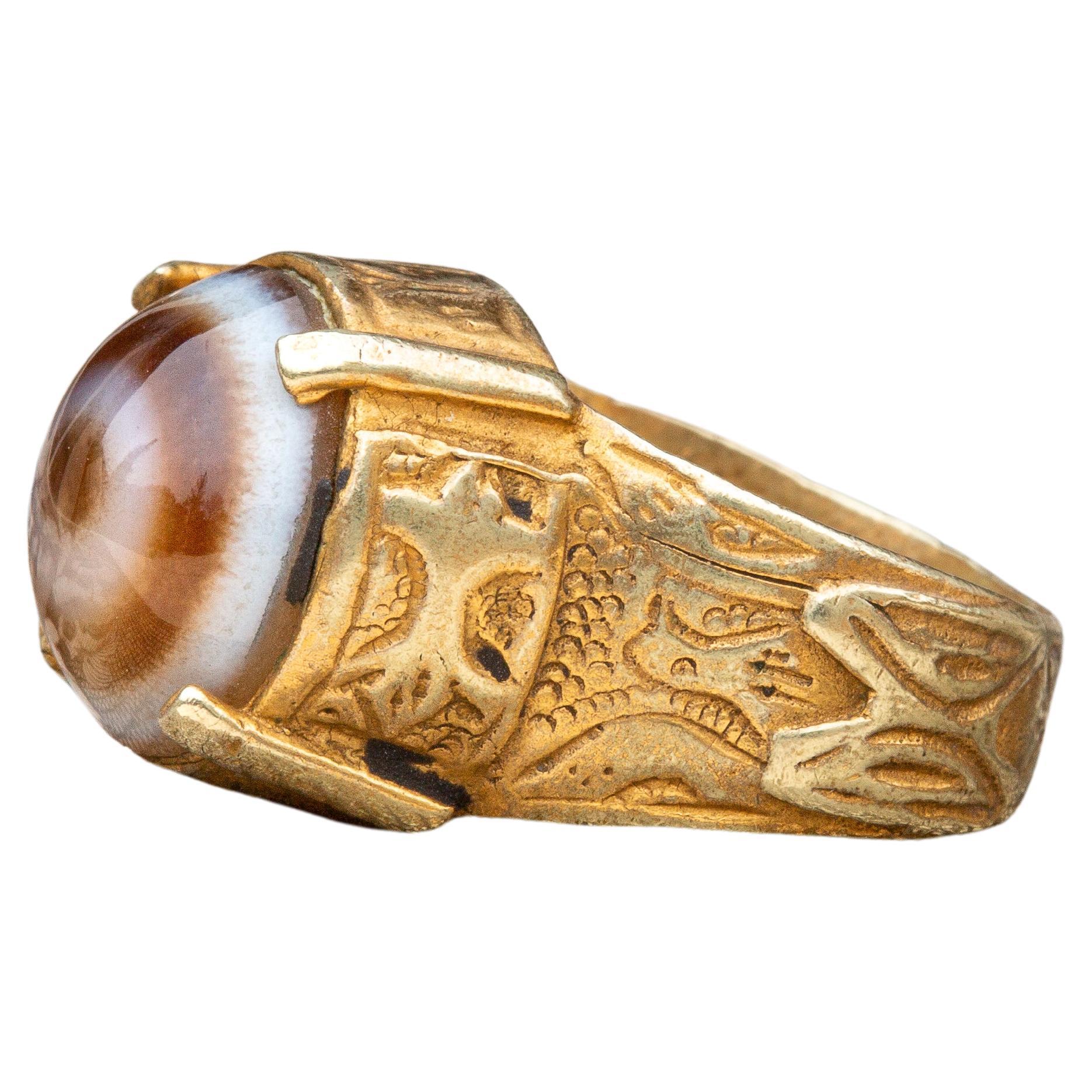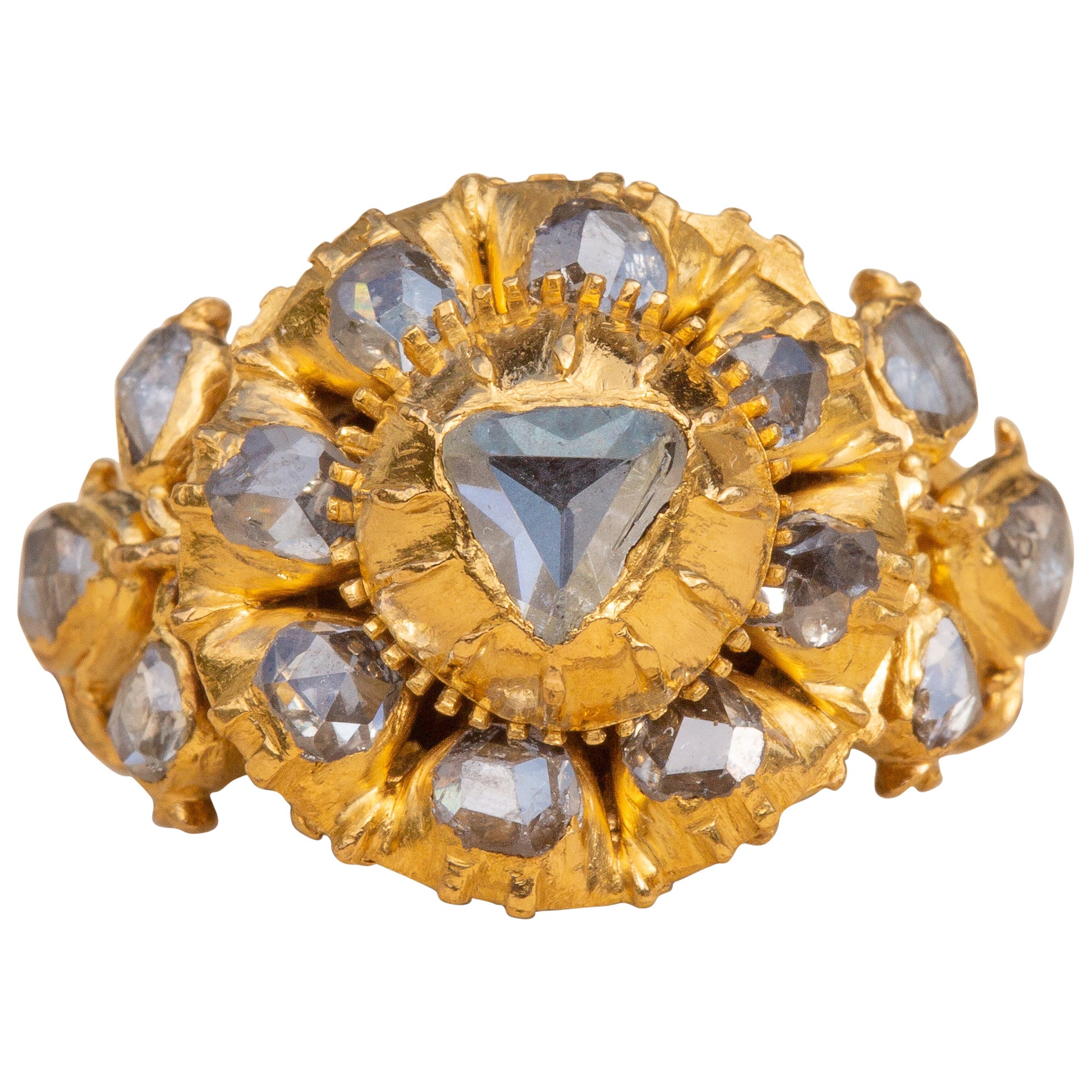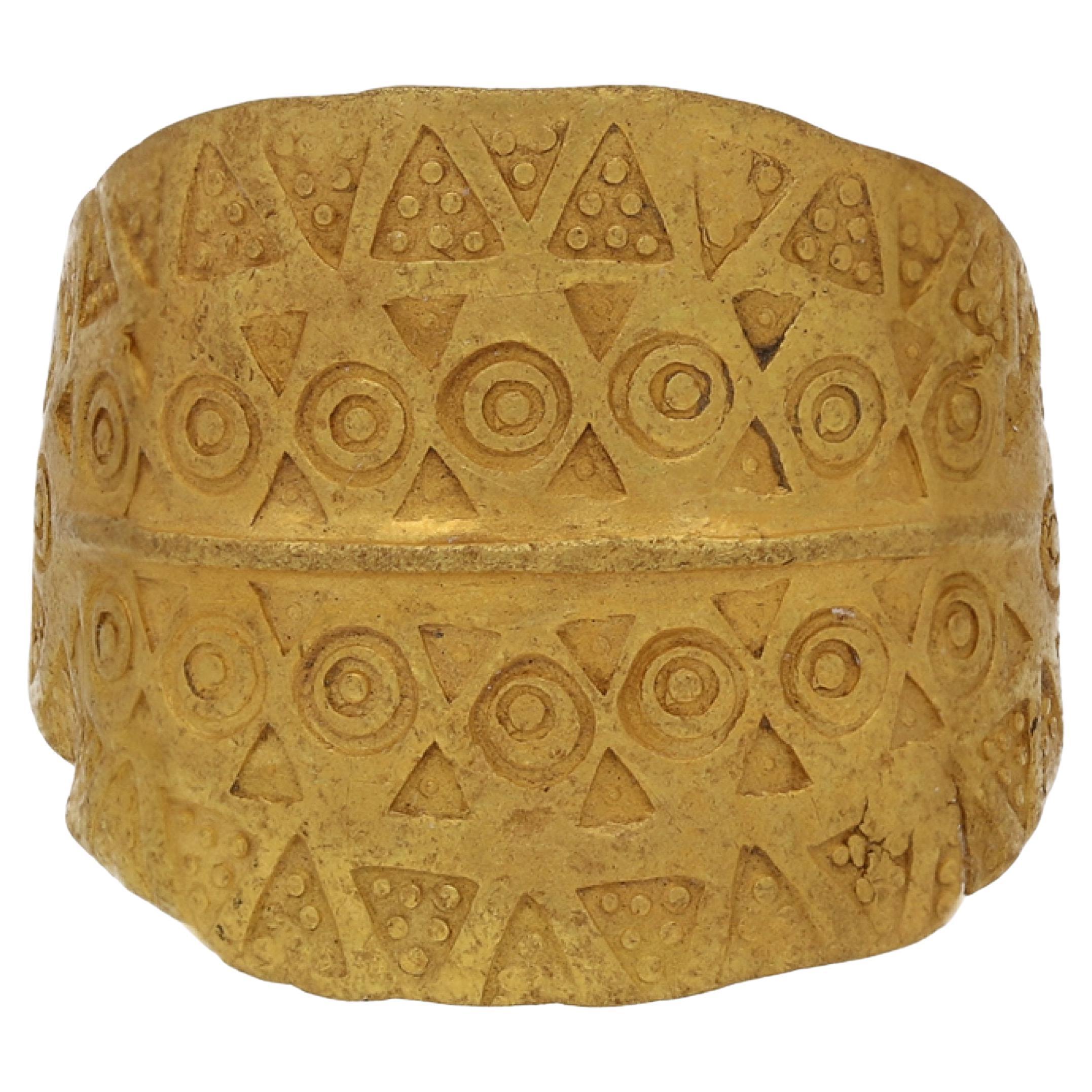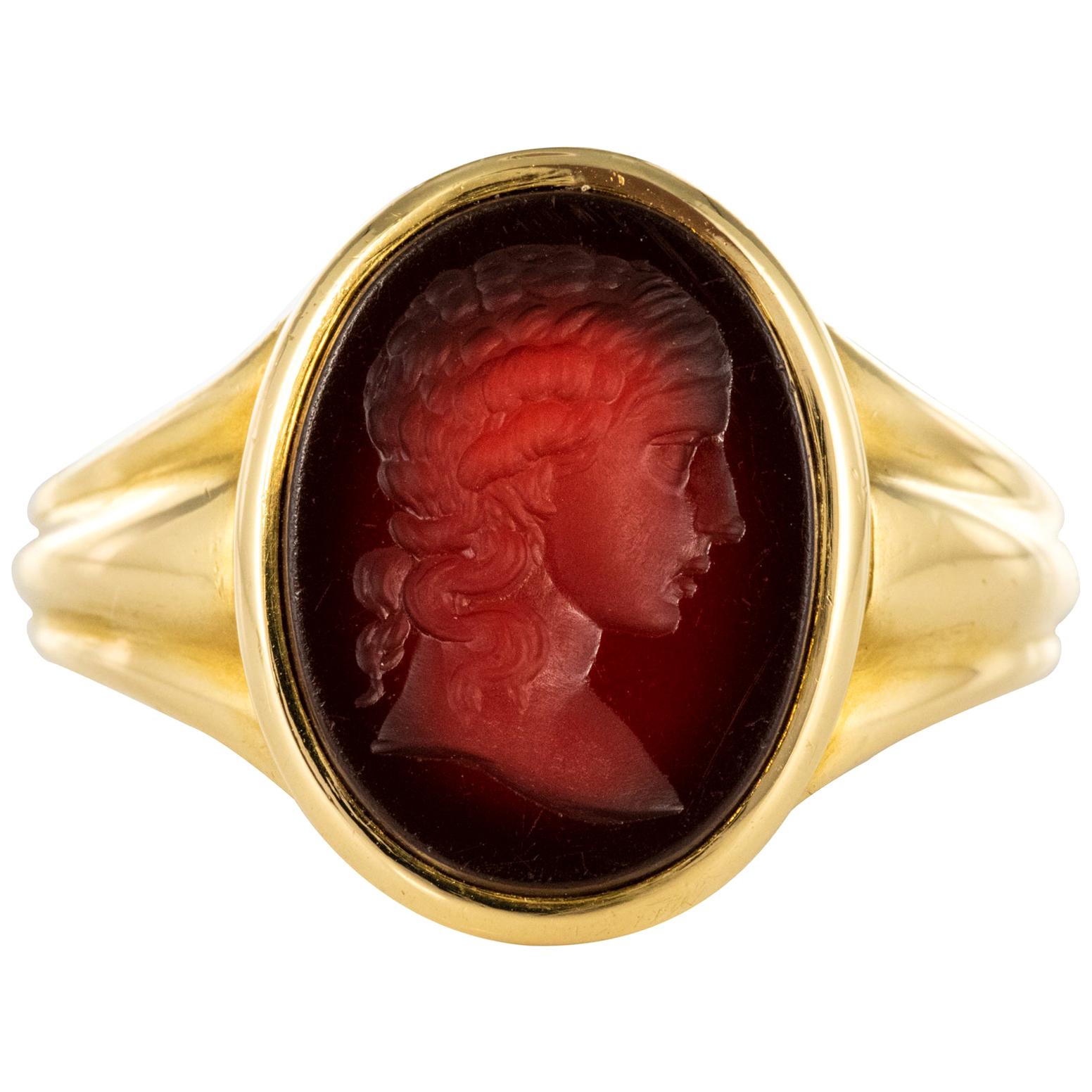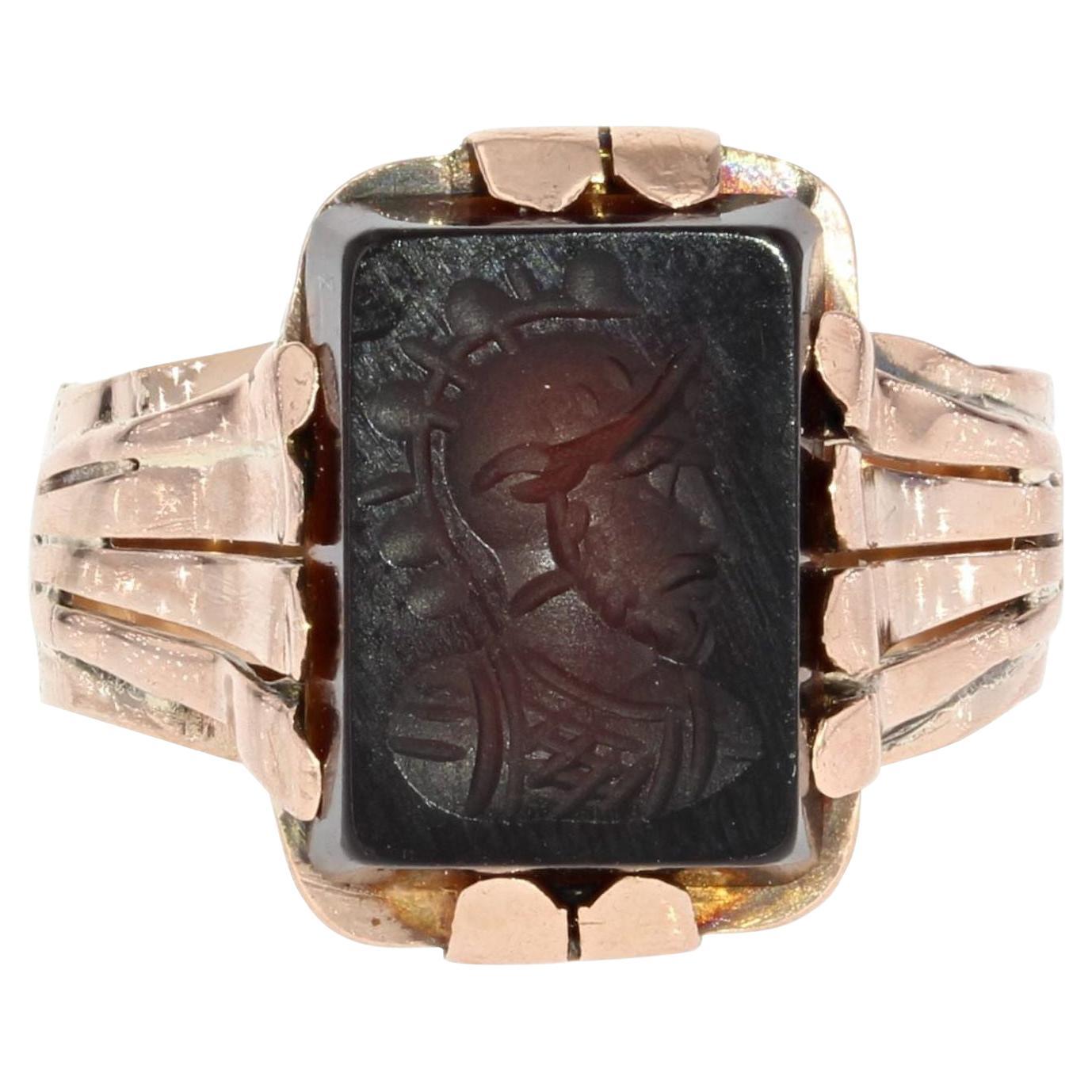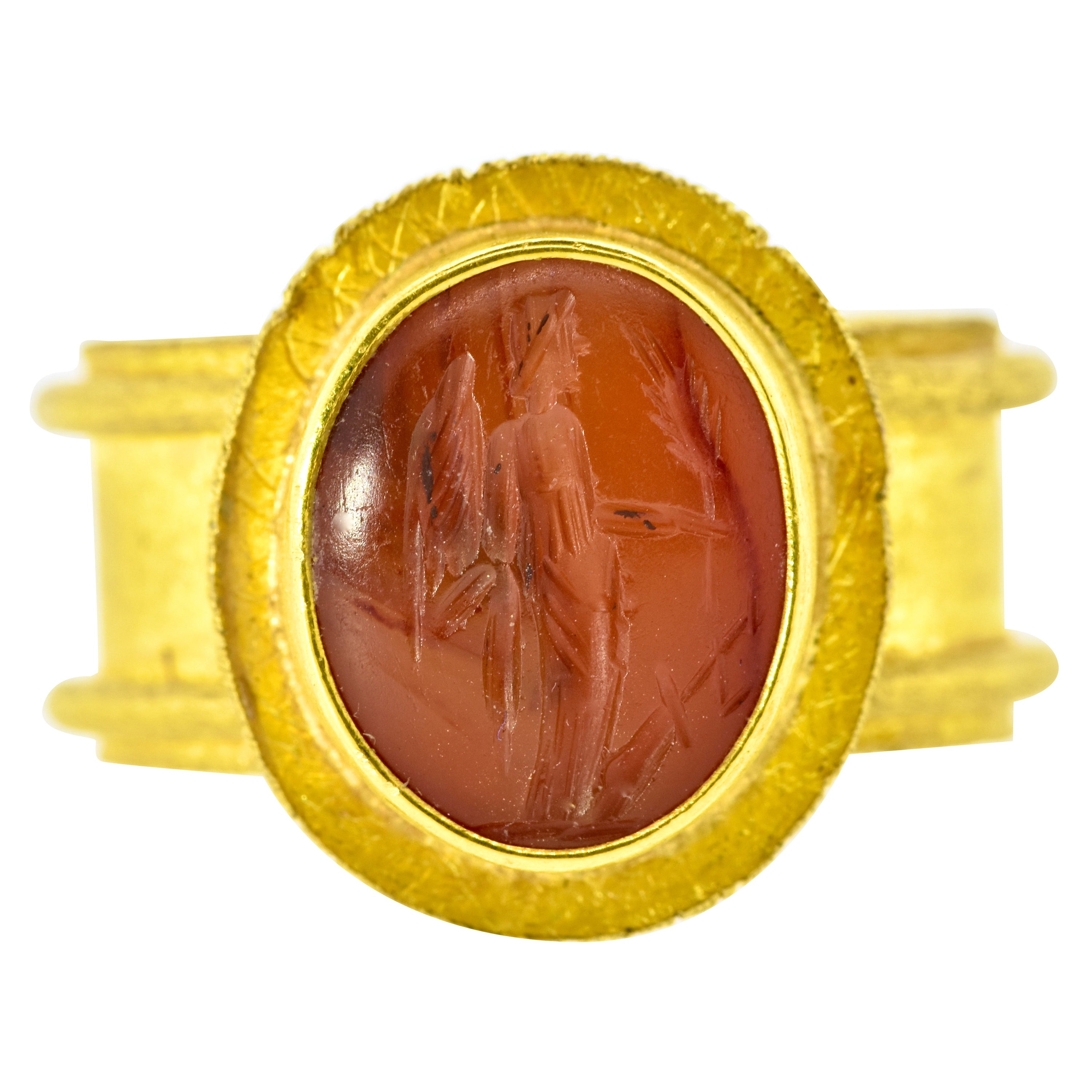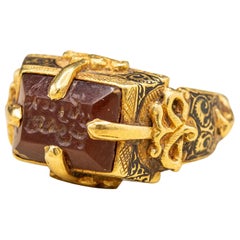
11th Century Seljuk ‘Selçuklu’ Dynasty Museum-Grade Islamic Intaglio Ring
View Similar Items
Video Loading
Want more images or videos?
Request additional images or videos from the seller
1 of 10
11th Century Seljuk ‘Selçuklu’ Dynasty Museum-Grade Islamic Intaglio Ring
About the Item
- Ring Size:4.75 US, Not Resizable
- Metal:
- Stone:
- Stone Cut:
- Weight:5.9 g
- Place of Origin:Iran
- Period:
- Date of Manufacture:1050
- Condition:Wear consistent with age and use.
- Seller Location:London, GB
- Reference Number:1stDibs: LU2845216742832
About the Seller
5.0
Vetted Seller
These experienced sellers undergo a comprehensive evaluation by our team of in-house experts.
Established in 2019
1stDibs seller since 2022
32 sales on 1stDibs
Typical response time: 14 hours
More From This SellerView All
- Museum-Grade Antique Early Seljuk ‘Selçuklu’ Period Islamic Intaglio RingLocated in London, GBThis incredible gold ring dates from the 12th century Seljuk dynasty. The carnelian intaglio is set within a typical Seljuk tapered rectangular bezel with a four-pronged gold setting...Category
Antique 15th Century and Earlier Asian Signet Rings
MaterialsCarnelian, 22k Gold
- Antique Seljuk ‘Selçuklu’ Period Gold Islamic Medieval Signet Ring 11th-13th CLocated in London, GBThis quite small (yet mighty) 21K gold ring dates to the 11-13th century Seljuk dynasty. The hexagonal bezel features a negative cursive inscription within a border containing arabes...Category
Antique 15th Century and Earlier Signet Rings
MaterialsGold
- Royal Siam 'Thai' Museum-Grade 18th Century Ayutthaya Ceremonial RingLocated in London, GBThis incredibly ornate piece was made in Siam during the late Ayutthaya or early Rattanakosin Kingdom period. It dates to the late 18th and is a very rare example of a ceremonial ‘mondop’ or ‘pagoda’ ring. These rings were made for the monarchy and aristocratic class of Siam to be worn as part of the lavish adornment paraphernalia used in ceremonies. These elaborate rings were subsequently given as gifts to important visitors or other aristocratic families. A similar example is found in Musée National du Château de Fontainebleau and was originally presented to Napoléon-III by the ambassadors of King Mongkut of Siam (Rama IV) alongside hundreds of other lavish gifts in order to re-establish diplomatic relations between France and Siam in 1861. Among these gifts are old jewels from King Mongkut’s treasury, including the gold diamond mondop/pagoda ring (see photos). During this visit, the son of the Siamese ambassador, Khoumsombat, is photographed wearing a very similar tiered mondop ring with what also appears to be a ruby cabochon at the top (see photos). A ‘mondop’ is the tiered roof of a temple, for example that of Wat Phra Kaew in Bangkok, and is designed to be in the shape of the image of Buddha. The top tier of this ring features a bezel set star ruby cabochon while the rest of the bezel is covered with diamonds. The two outermost tiers rotate and are connected to the main body of the ring with a bifurcated rivet visible on the closed-back underside of the bezel, typical ornamentation of 18th century layered cluster rings. The arched shoulders are equally as ornate with bezel set rub over diamonds, emeralds and rubies appearing between foliate motifs and protruding serpent-esque decoration. The underside and outershank display bright red and green floral enamelling often seen on naga rings...Category
Antique Late 18th Century Thai More Rings
MaterialsDiamond, Emerald, Ruby, 22k Gold
- Scarce 13th-14th Century Islamic Late Seljuk Empire Gold and Eye Agate RingLocated in London, GBA superb Islamic gold and agate ring dating from the 13th to 14th century. The brown ‘sheep’s eye’ agate cabochon sits within a truncated conical bezel with a four-pronged setting soldered to the outside, typical of Seljuk dynasty rings. In the space between the prongs, the bezel is engraved with various zoomorphic motifs. These engravings continue down the tapered, flat shank and each shoulder is decorated with a splayed bird. This animal based ornamentation was most commonly found on Seljuk rings towards the end of the empire (13th-14th century). For similar referenced examples of Seljuk rings see pages 55-69 in ‘Islamic Rings...Category
Antique 15th Century and Earlier Turkish Signet Rings
MaterialsAgate, Gold
- Important 19th Century Royal Siam Diamond Cluster Ring Museum-Grade ThaiLocated in London, GBAn outstandingly rare mid-19th century royal Siam diamond cluster ring, made by the royal goldsmiths of the court of Bangkok. This is an extremely fine example of the jewellery commissioned and subsequently bestowed by the Kings of Siam, principally to be worn by participants in royal and aristocratic life-cycle ceremonies in the courts of Bangkok. In the mid-19th century, King Mongkut (Rama IV) of Siam also commissioned the courtly jewellers to create a number of faithful replicas of these ceremonial jewels to be offered as gifts to diplomatic families, important visitors and to Heads of State across the world when re-establishing diplomatic relationships. One such example (which is remarkably similar to the present ring) resides in the museum of the Château de Fontainebleau (item F1518C) where it was given as a gift from King Mongkut to Napoléon-III on the important ambassadorial visit of 1861 (see photos for a side by side comparison). Ceremonial Use: During the 19th century, many rings were made every year by the royal jewellers for ceremonial use. Examples of these lavish cluster rings being worn for these life-cycle ceremonies can be seen on old photos and paintings of the Royal Tonsure Ceremony, also known as ‘the cutting of the top-knot’ ceremony, which marked the transition from childhood into adulthood for all of the (many!) sons and daughters of the Siam royal family. The huge expansion in the number of royals in 19th century Siam stemmed from Kings Mongkut (Rama IV) and Chulalongkorn (Rama V) being highly polygamous. They had a joint total of 124 wives and 159 royal children, each requiring their own ceremonial regalia and princely jewels. As a result, Bangkok became home to some incredibly skilled goldsmiths in this period. The Tonsure ceremony was performed by the King, and lasted three days and three nights. All of the royal children would be dressed in the most splendid costumes and adorned with a vast amount of jewels on several parts of the body. Their costumes and jewels differed according to their title and rank. Diamonds for instance, would be bestowed to the highest ranking noble children. The royal children were allowed to keep their regalia and jewels as a present on entering adulthood to indicate their social status among society. Over the years, these royal jewels have been dispersed across the many noble families, with currently only a few important pieces remaining in the royal collection. Today, the number of royals in Thailand is contracting as the country follows the Chinese nobility system whereby with each generation the noble rank of a family decreases by one ranking so that eventually the majority of descendants will lose their noble status completely. This loss of royal privilege, coupled with the dilution of wealth has meant that items such as this ring become available on the open market. Following the end of the absolute monarchy in Thailand in 1932, many members of the royal family relocated to Europe and as a consequence, princely Thai items can occasionally be found in the European art market. Gift Exchange: In Siam culture, great importance is placed on the ancestral process of gift-exchange. During the reign of King Mongkut, close relationships with some powerful countries were cultivated in order to hold the balance of power and to save Siam from being colonised. The King used gift-exchange to establish diplomatic relations with other heads of state around the world, as well as with other kings, princes and sultans closer to home. He sent troupes of ambassadors to England (1857) and France (1861) with seemingly endless amounts of trunks filled with lavish gifts in order to dazzle the heads of state with the extraordinary quality and variety of Siam craftsmanship. These gifts consisted of faithful replicas of the Royal Regalia and objects belonging to the King himself; items and jewellery worn by him on his Tonsure ceremony and on his coronation day. Enormous time and effort was required by the Siam court to assemble these numerous gifts, as they emanated from the very same royal goldsmiths and courtly craftsman who had made the original ceremonial items. The most famous of these ceremonies took place at the Chateau de Fontainebleau in 1861. The painting by Jean-Léon Gérôme that immortalised the event prominently features the most spectacular of these gifts. Among the 150 gifts presented to Napoléon-III by the Siam ambassadors were two diamond-set rings, both of which are on display in the Musée du Chateau de Fontainebleau (item no. F1518C and F1519C). One of these rings is a rose cut diamond cluster and bears a striking resemblance to the ring we are offering. According to Bruley (2011), this ring, presented to Napoleon-III, was a faithful replica of the ring worn by King Mongkut on his own coronation day in 1851, which now resides in the Pavilion of Royal Regalia in Thailand. The Ring: From whichever angle the present ring is viewed, it is a masterpiece of design and a testament to the ingenuity and craftsmanship of the Siam royal goldsmiths. The bezel head is composed of two layers, the uppermost, containing the large triangle shaped table-cut diamond, is riveted to the main body of the ring. The second layer of the cluster is set with a further eight rose cut diamonds and this section allows for small rotation, typical of Siam jewellery...Category
Antique Mid-19th Century Thai Victorian Cluster Rings
MaterialsDiamond, 22k Gold
- 16th Century Renaissance Gold Ring with Table Cut Rock Crystal 22K GoldLocated in London, GBA stunning example of a European renaissance ring dating to 1550-1600! A table-cut rock crystal is mounted in a closed back rub over setting. The quatrefoil bezel is cuffed with a re...Category
Antique 16th Century British Renaissance More Rings
MaterialsRock Crystal, 22k Gold
You May Also Like
- Viking Gold Penannular Twisted Ring, 9th-11th CenturyLocated in London, GBViking gold penannular twisted ring. A yellow gold ring formed of a single twisted gold rod, graduating from center, the ends of the rod drawn out to a sol...Category
Antique 15th Century and Earlier More Rings
MaterialsGold
- Viking Gold Twisted Wirework Ring, circa 9th-11th Century ADLocated in London, GBViking gold twisted wirework ring. A yellow gold ring formed from a slender beaded wire coiled around a thick twisted gold rod, graduating slightly from the centre and tapering to a solid rounded shank. Tested yellow gold, approximately 10.60g in weight, circa 9th-11th century AD. This Viking ring...Category
Antique 15th Century and Earlier More Rings
MaterialsGold
- Viking gold stamped ring, circa 9th-11th century ADLocated in London, GBViking gold stamped ring. A large yellow gold ring featuring a curved bombe' shaped plaque, with raised linear detail to the centre and decorated with a series of repeated triangular...Category
Antique 15th Century and Earlier Scandinavian Band Rings
MaterialsGold, Yellow Gold
- 19th Century Carnelian Intaglio 18 Karat Yellow Gold RingLocated in Poitiers, FRRing in 18 karat yellow gold. Antique men's ring, it is adorned with a cameo on carnelian representing the profile of a woman. On either side of the head, the worked ring becomes thinner towards the base. Height : 18.5 mm, width : 14.7 mm, thickness : 4 mm, width at the base of the ring: 3.3 mm. Total weight of the jewel : approximately 11.9 g. US Size : 12,5 ; Free resize, please contact us. Authentic antique jewel - Work from the second half of the 19th century. Our opinion: Superb antique man...Category
Antique Late 19th Century French Napoleon III More Rings
MaterialsCarnelian, Gold, 18k Gold, Yellow Gold
- 19th Century Intaglio 18 Karat Rose Gold RingLocated in Poitiers, FRRing in 18 karat rose gold. Antique ring, it is decorated with an intaglio on agate representing a helmeted man. It is held on all its sides by pallets. Height : 14,5 mm, width : 10,1 mm approximately, thickness : 4,4 mm, width of the ring at the base : 5,4 mm. Total weight of the jewel : 3,6 g approximately. US Size : 7 ; Free resize, please contact us. Authentic antique jewelry - Work of the XIXth century. Marks of time and restorations on the back of the jewel, invisible when worn. Our opinion : A nice antique intaglio ring...Category
Antique Late 19th Century French Napoleon III More Rings
MaterialsAgate, Rose Gold, Gold, 18k Gold
- Roman Intaglio Carnelian RingLocated in New Orleans, LAExceptionally rare and fashioned in the 2nd or 3rd century CE, the carved carnelian gemstone at the center of this ring hails from the Roman Empire. Displaying a rich red color and carved with the image of two Roman deities with a child, the creation exudes the glory of late antiquity. Each taking a classical contrapposto stance, the leftmost god appears crowned with laurels and grasping a staff, while the other appears nude. At their feet, an infant stretches his arms upward toward the divine figures. The crimson carnelian, more than a millennia-old, is set into a later 14K gold ring setting...Category
Antique 15th Century and Earlier European Signet Rings
MaterialsCarnelian, 14k Gold, Yellow Gold
Recently Viewed
View AllMore Ways To Browse
Bevelled Ring
Bevel Ring
Rectangular Shaped Ring
Ornate Band Ring
Silver Ruler
Antique Gold Knobs
Ornate Silver Ring
Islamic Engraved
Set Of 4 Barrel
Carnelian Seal
Islam Jewelry
Islamic Jewellery
Barrel Ring
Turkish Antique Jewellery
Antique Turkish Jewelry
Antique Turkish Jewellery
Cabochon Carnelian Gold Ring
Sugarloaf Setting

